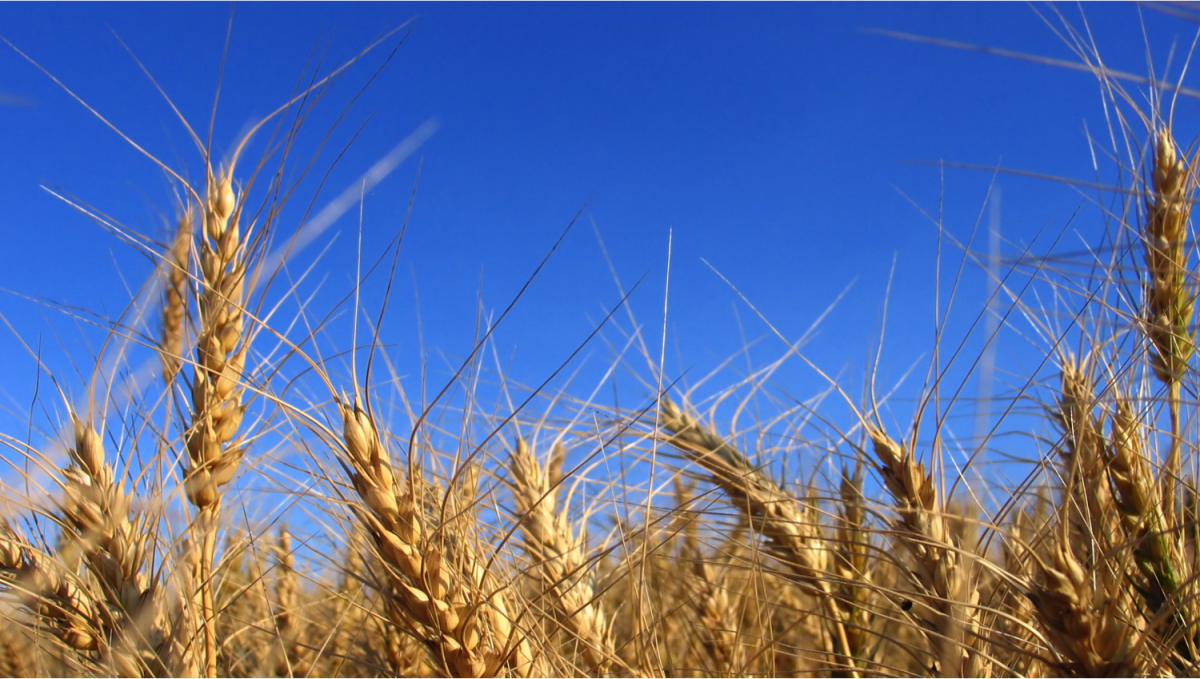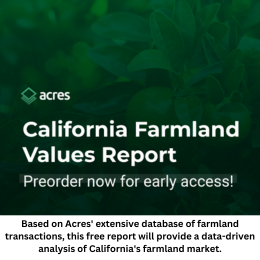March 15, 2024
By Ben Palen, Ag Management Partners LLC
In considering the mega trends that have emerged in recent years in the agricultural world, two that stand out are sustainability and carbon. Those topics are part of a broader discussion that is occurring in the private and public sectors as the world grapples with climate change, reductions in availability of certain resources, and a general social awareness that certain lifestyle changes may need to occur all over the globe for the sake of environmental preservation for ourselves and for future generations.
Large sums of capital have been raised by companies that are offering various goods and services pertinent to both noted topics. Similarly, significant capital has been invested in projects that are focused on producing crops and livestock that are touted as “sustainable” or “low carbon.”
A challenge for some observers, including this author, is that in some cases labels of “sustainable”, “low carbon,” or “carbon neutral” are used to sell agricultural products to consumers. The labels are, in effect, a means of making a claim that is akin to self-reporting because there is little in the way of benchmarks. That begs the question – if there is no benchmark, how does one validly make these kinds of claims?
Our focus here is on one of the mega trends – carbon. There is confusion and skepticism among farmers when it comes to getting paid for carbon. I have written about the “smoke and mirrors factor” that comes to mind for so many farmers when they are asked about carbon markets. If there is a lack of means and methods to build credibility for measuring carbon, then how can the idea avoid being just another trend that diminishes because the perception and the reality do not match? It is in the best interests of all participants in agriculture to figure this out.
Accordingly, this essay will have a specific focus on carbon in the context of a large organic wheat farm with which we are involved. The organic standards are relatively straightforward, including “bright line” tests to detect any prior use of synthetic herbicides and fertilizers, and required verification of records by independent third-party certifiers. The process, while not without potential for abuse by bad actors, is credible and generally accepted by buyers of the products, resulting in a premium paid by consumers for organic products that are a reflection of these practices and verification. A consumer in the produce section of a market is not left to wonder if one grower is using a different standard than another grower of the same organic product. I do not think that the same can be said with respect to “low carbon.”
We see a twofold opportunity on this organic wheat farm with respect to carbon. First, there is potential for marketing the wheat not only as organic, but also as low-carbon because of our farming practices. Second, the carbon that is sequestered in the soil may represent another revenue stream by means of a sale as a carbon offset. We do not view the two things as mutually exclusive.
The challenge is that we have not found a third-party standard that would be generally accepted as the basis for stating that the wheat is “low carbon.” This is not the honor system where the wheat is low-carbon just because we say it is. Instead, there must be some credible basis, rooted in data, to support the claim. In other words, a benchmark.
Let me digress for a moment to refer to just such a potential benchmark, and that is the CI (Carbon Intensity) score that is being developed for corn used in the production of ethanol. The CI approach came about via the Inflation Reduction Act with the goal to reward farmers (and ethanol refiners) who are raising/using corn that is produced using practices that lower its carbon footprint and environmental impact. The regulations attending this are due to be released soon, and the indications are that they will have points of reference (e.g., benchmarks) for eco-friendly practices such as use of cover crops, reduced fertilizer rates, etc..
The American Coalition for Ethanol has a Corn Ethanol Carbon Intensity Calculator that is keyed to calculate the carbon footprint of inputs (fertilizer, fuel, etc.), and agronomic practices (no till, reduced till, cover crops, etc.), and it is believed that the regulations will follow the Calculator pretty closely. In essence, these benchmarks are tied to the amount of energy used to produce one bushel of corn, giving an indication of the carbon generated from the production and use of inputs for the crop.
Use of a CI score provides a data-driven means to create monetary value for growers and others in the corn value chain, and to present a persuasive view of the environmental benefits of low-carbon methods. In other words, rather than just “talking the talk,” participants can “walk the walk”. Further, the environmental benefit from a bushel of corn with a lower CI score can be quantified in comparison to a bushel of corn with a higher CI score.
For wheat, we are not aware of any similar standard. We have spoken to some grain buyers, all of whom have expressed interest in the low-carbon grain, but they also are wondering about the means and methods for identifying low-carbon wheat so that this additional value channel is created for farmers, while demonstrating environmental benefits.
Due to the lack of third-party standards, we have taken matters into our own hands by making an effort to create a framework to support our contention that our wheat is not only organic, but also low-carbon. The basic elements of our approach are as follows:
~ Detailed soil sampling on the farm to determine soil organic carbon by field zone.
~ Tracking of fuel usage for each activity.
~ Determination of area standard fertility and other input usage for a typical area wheat yield.
~ Review, using the EPA’s Greenhouse Gas Equivalencies Calculator, and the U..S Energy Information Administration data base, of the carbon footprint of each of our inputs in the organic scenario, as well as those used in the “normal” wheat production approach in the area.
~ Creation of a financial model that compares each of our activities on the land with those in the traditional system from the standpoint of carbon footprint.
As an example of how our model works, the rule of thumb in the geographic area of the farm is about 1.5 units of nitrogen to produce a bushel of wheat. That nitrogen has as its feedstock anhydrous ammonia, which is made from natural gas. Natural gas has substantial amounts of carbon dioxide as well as nitrous oxide, which is many times more potent than carbon dioxide. We determined a carbon footprint for the fertilizer in a no-till scenario. The no-till program allows for a large reduction in carbon due to fewer passes over the land with a diesel-powered tractor. But there are very large carbon impacts from the synthetic fertilizer that play a huge role in the CI calculation.
In effect, we have created an in-house wheat version of the CI calculator that was originally created for corn. Because of the level of documentation that we are keeping, the extensive soil sampling that we did, and the use of generally accepted standards for calculating carbon footprints from the various inputs, we have confidence that buyers of our grain will be comfortable in viewing it as “low carbon”, and in marketing it as such. While our model is proprietary at this point, we can say that our approach indicates that the carbon footprint of our organic grain is about 30 percent of the “normal” footprint for wheat raised in our area.
At some point—probably in a few years—the farm will move away from organic practices. Even then, we are looking at practices that will keep our carbon footprint in a favorable comparison with the more common practices in the area. Therein lies a challenge that proponents of low-carbon grain might not fully comprehend.
It goes without saying that all of the above is premised on the idea that the market will reward us for our low-carbon practices. It is probable that there will be some tradeoffs as far as crop yields are concerned with this low-carbon approach. For example, cover crops are all the rage in certain areas, but in my opinion, stretch credibility in the sense that they are sometimes put forth as useful for all farmers. In reality, a lower rainfall area, such as we have in eastern Colorado, makes them unfeasible in this location. That begs the question of how farmers in large areas of the U.S. can make the trade-off work.
For instance, it is usually very beneficial for a farmer to use a no-till practice. But without fertilizer, it is highly likely that crop yields in a low-carbon scenario (e.g., with minimal fertilization via conventional sources) using no-till will not pencil-out vis-a-vis a no-till program that relies on synthetic fertilizer at normal rates. At this point, there are no commercially viable low-carbon options to synthetic fertilizer that can be applied in a large-scale way. So, while the goal of low-carbon grain is noble, taking that approach also must be financially sustainable. That fact must not be lost amidst all of the enthusiasm for low-carbon practices.
Financial incentives could come about from social and economic policy—as is the case with the tax credit for low CI score corn. But they can—and must—also come from upstream users/consumers. We need to be realistic. Farmers will not buy into the low-carbon approach if the financial outcome is unfavorable. It is really important for the credibility of all of us involved in agriculture that low-carbon approaches are presented in a way that considers all facets of the topic. The opportunity is significant, but so are the challenges. My gut feeling is that the sheer magnitude of this situation will best be addressed, at least in the early stages, by government incentives akin to what the tax credit in the Inflation Reduction Act should do for corn growers, the ethanol industry, and the environment.
ABOUT THE AUTHOR:
Ben Palen is a fifth generation farmer with experience in many aspects of agriculture, including projects in the United States, Africa, and the Middle East. The focus on all projects is sustainable practices based on a mix of boots on the ground work and selected use of agtech tools.
*The content put forth by Global AgInvesting News and its parent company HighQuest Partners is intended to be used and must be used for informational purposes only. All information or other material herein is not to be construed as legal, tax, investment, financial, or other advice. Global AgInvesting and HighQuest Partners are not a fiduciary in any manner, and the reader assumes the sole responsibility of evaluating the merits and risks associated with the use of any information or other content on this site.

Let GAI News inform your engagement in the agriculture sector.
GAI News provides crucial and timely news and insight to help you stay ahead of critical agricultural trends through free delivery of two weekly newsletters, Ag Investing Weekly and AgTech Intel.




